 |
NORTH POLAND PHOTO TOUR Part 4 - Castles and Churches - Pomerania, Mazury, Warmia |
Bill Biega's Photo Collection |
|
Click on any illustration with colored border to see it full size. Then click on "Back" button to return to this page.
Bytów, Chelmno, Frombork, Lidzbark, Malbork, Nidzica, Olsztyn, Swięta Lipka have one thing in common - castles, churches and walls built between the 12th and 16th centuries. The Polish astronomer Copernicus lived and worked at several of them. The area is also one of natural beauty: the beaches and dunes of Słowinski National Park near Łeba, the numerous lakes of the Mazury Lakeland.. See for details. | ||
| Pomerania (Pomorze) was under Polish princes already in the 10thC. Later it came under German domination. Bytów castle was built around 1400 by the Teutonic Knights. Today it is a museum and a hotel. The local population are Kashuby who speak a Polish dialect and have their own culture and folklore. Many emigrated to Canada and established communities in the 19thC. |
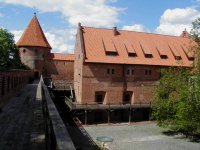
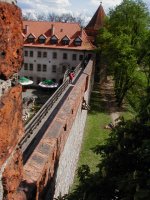
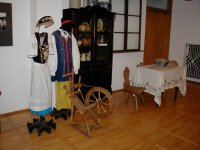
| |
| Chełmno was the first city and fortress established by the Teutonic Knights in 1233. The city walls remain virtually intact today. The Town Hall (ratusz) was built in the 16thC. Of the many old churches, the prettiest is 13thC. St. John, inside the Benedictine Monastery, which is now a home for orphans and aged. |
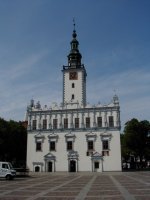
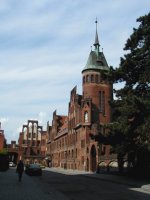
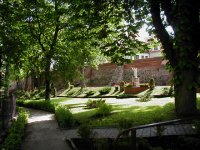 | |
|
This is the Grudziądz Gate in Chełmno's walls.
Pomerania is bounded on the north by the white sand beaches of the Baltic. From the resort at Łeba you can reach the fantastic shifting sand dunes of Słowinski National Park. They move inland several meters a year. |
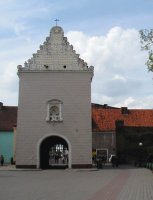

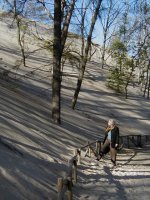
| |
| Malbork is the mightiest ot the Teutonic Knights' fortresses and the capital of their independent state until returned to Poland at the end of the 15thC. It consists of the Upper Castle, the Middle Castle and the Palace of the Grand Master surrounded by common walls and a moat. The main gate has been reconstructed with its portcullis. |
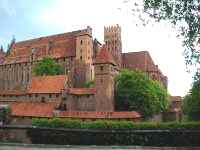
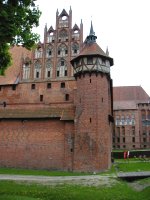
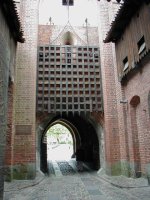 | |
|
The Baltic beaches provide a treasure trove of amber, here are some pices from the Malbork Museum.
The fortified 14thC Cathedral of Frombork, north of Malbork, was home to Nicolas Copernicus. Here he completed his astronomical work just before he died in 1543. The organ was completed in 1683. |
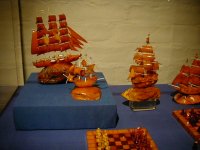
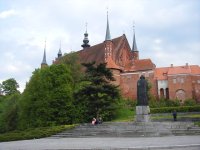
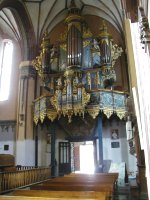 | |
| At Lidzbark the castle of the Bishops of Warmia dominates a narrow river Valley. In 1503-1510 Copernicus was secretary to his uncle, one of the bishops, and commenced the work that was to make him famous. |
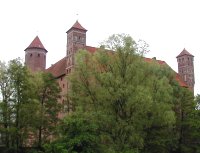
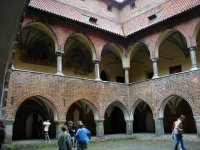
| |
| Some of the richest Baroque church art in Poland is to be seen at the Shrine of the Virgin in Święta Lipka, close to Lidzbark, which was built in the late 17thC. |
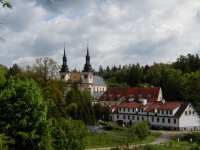
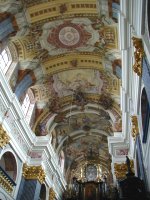
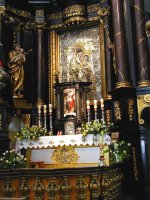 | Olsztyn is the capital of Warmia and Mazury and a base for exploring the extensive Mazury lake region. The castle of the Bishops of Warmia was another place where Copernicus worked and you can see some of his original astronomical drawings in the museum. The High Gate towers over the main street of the old town. |
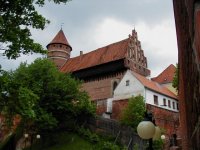
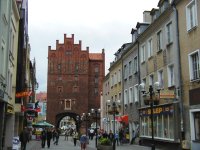
|
The southernmost of the Teutonic Knights' castles is at Nidzica, on the road from Warsaw to Olsztyn. It is now a hotel. Driving north from Warsaw, at Ciechanów you pass close by the ruins of the 15thC castle of the princes of Mazovia. |
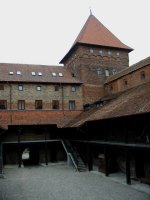
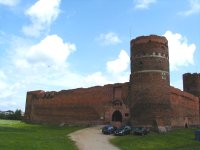 |
Return to Top of page.
Return to Part 1 in this series of Photo pages.